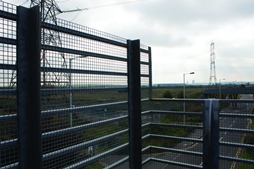Decoding the Intricacies of Galvanised Stainless Steel Grades 304 & 316 in Wire Mesh Creation
04-01-2024
Delving into the world of stainless steel wire mesh, one can distinguish two chief variants – Grade 304 and Grade 316. This article will guide you through the complex intricacies of these two grades, their characteristics, applications, and the multitude of industries that benefit from their use.
Before diving into the specifics of Grades 304 and 316, it is crucial to establish a basic understanding of what stainless steel is. Stainless steel is a robust alloy, a combination of iron and chromium, often supplemented with nickel and other elements. The exact proportions of these elements determine the grade of the alloy.
Stainless Steel Wire Mesh: An Overview
Stainless steel wire mesh is an essential material used in a spectrum of industrial applications. Its remarkable strength, durability, and adaptability make it a preferred choice for industries ranging from aerospace and agriculture to mining and machinery, and more.
Type 304 Stainless Steel: The Standard Option
Type 304 stainless steel, also known as T-304, is an alloy that contains 18% chromium and 8% nickel. It is affordable, versatile, and comes with a slew of advantages.
Salient Features of T-304
T-304 stainless steel exhibits excellent heat resistance, withstanding temperatures as high as 1600 °F. It is non-magnetic, operates well in sub-zero temperatures, and is resistant to corrosion. It also has a low tendency to oxidise. This type of wire mesh is widely available in a diverse range of sizes, wire diameters, and weaves.
Industries and Applications of T-304
T-304 stainless steel finds applications in various industries including mining, food production, water filtration, automotive, aerospace, manufacturing, construction, and refinery. Its uses range from the creation of mouldings and trims, equipment tubing and piping, electrical enclosures to particle separation, screening abrasives and liquids, and even storage tanks.
Type 316 Stainless Steel: The Premium Choice
Type 316 stainless steel, or T-316, is another common type of stainless steel alloy. It contains 16% chromium, 10% nickel, and 2% molybdenum. Despite being slightly pricier than T-304, it is equally versatile and comes with its own set of benefits.
Salient Features of T-316
T-316 stainless steel offers better corrosion resistance than T-304. It is non-magnetic, can withstand extreme temperatures and harsh environmental conditions, and is resistant to spot welding. It is particularly suitable for marine environments and is unlikely to oxidise.
Industries and Applications of T-316
T-316 stainless steel is used in various sectors such as marine technology, food processing, manufacturing, automotive, shipbuilding, and the pharmaceutical and medical industries. Its applications include boat fittings, chemical processing and storage, heavy welding, machinery, marine components, and particle separation.
The Difference Between T-304 and T-316
The core difference between T-304 and T-316 lies in their durability and resistance to heat and corrosion. While T-304 is the standard version, T-316 is the premium option. To the untrained eye, these alloys look nearly identical, but they significantly differ in their performance and application.
The Superiority of Stainless Steel Mesh
Compared to other materials like galvanised mesh, stainless steel mesh is superior due to its durability, strength, and low environmental impact. It is also incredibly cost-effective in the long run due to its longevity and minimal maintenance requirements.
The Process of Creating Wire Mesh
Wire mesh is created through two primary processes – weaving and welding. Both these processes are automated and carried out by pre-programmed machines. The end result is a variety of wire mesh configurations suited to different applications.
Applications of Wire Mesh
Wire mesh is not just durable but also versatile. It can be formed, bent, welded, cut, fixed, and fabricated for a multitude of functions and applications including sieving of foods, separating solids and liquids, and even as a decorative feature in architecture.
Final Thoughts
Understanding the nuances between Grades 304 and 316 stainless steel is crucial when deciding on the right material for your specific needs. Whether you require a durable alloy for general use or a superior corrosion-resistant material for marine environments, both these grades of stainless steel offer unique benefits that can cater to a wide array of applications.





